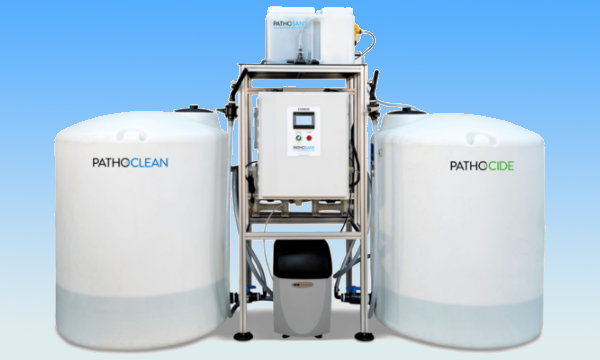case study
Improving Food & Worker Safety at Stokes Fish Company
Problem:
Ted Brozanski, President, Chief Operating Officer of Stokes Fish Company in Leesburg, Florida said they were using a standard dilution station to add chemical concentrate into the water line. However, workers were unable to get the desired chemical ratios. “Eventually, we abandoned the dilution station and started using 100% chemical concentrate,” said Brozanski. It proved to be a short-term solution because it came with its own set of problems:
- Workers, exposed to full-strength chemicals, were experiencing burns, rashes and respiratory issues
- Equipment failure increased due to chemical erosion and corrosion
- Chemical use increased dramatically. Brozanski estimated Stokes was using about 10 times more than it did when chemicals were diluted
Unwilling to compromise on worker safety, Brozanski decided to explore other sanitation options.

Solution:
When Brozanski first learned about the PathoSans system, he was skeptical. It didn’t seem possible that a SAFE cleaner and sanitizer could be produced in the facility that would be powerful enough to kill pathogens, remove fish oil and odors. So safe, in fact, that workers can use PathoSans without Personal Protective Equipment (PPE). A short trial period eliminated any doubts.
The PathoSans system, which requires only salt, water and electricity for operation, was installed at Stokes Fish Company in 2017. The system produces a sodium hydroxide cleaner and a hypochlorous acid sanitizer in ready-to-use concentrations. The solutions are plumbed throughout the facility. The cleaner, heated to 130° F, is applied first with a soak time of 15 minutes. The cleaner is then rinsed with water using pressure washers. The final step is the spray application of the sanitizer to kill pathogens. Excess sanitizer flows through drains, providing an additional benefit of killing bacteria already in the drain.
Results:
In addition to effective pathogen and odor control, Brozanski places high value on the improvements in worker safety. The chemical burns and respiratory issues, commonly reported when conventional chemicals were used, have been eliminated. “Workers seem happier and productivity is high,” Brozanski noted.
Committed to operating as sustainably as possible, Stokes Fish Company is pleased with the reduction in its environmental footprint. “Chemicals are no longer delivered to our facility and there are no chemical containers to recycle. Plus, the cleaner and sanitizer are drain- and disposal-friendly, so we have no wastewater to treat,” Brozanski said.
Use of the PathoSans system has benefited Stokes Fish Company in many ways. In addition to improved worker safety and operating sustainability, the company has lowered its operating costs. On-site generation of cleaning solutions has proven more cost-effective than the use of conventional chemicals
For complete details of this case study, click here to see the PDF version.

